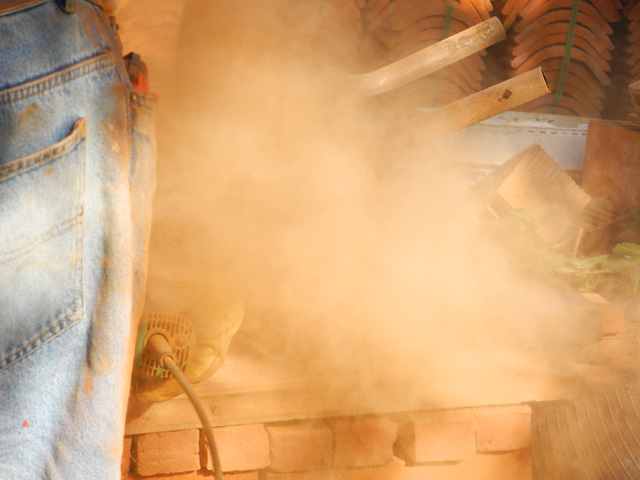data-elementor-type="post" data-elementor-id="666" class="elementor elementor-666" data-elementor-settings="[]">
It's Your Health. Look after It!
In this post, I’ll be talking about indoor air quality when renovating.
This article is the third in a series of articles on health risks when renovating. In previous articles, I discussed the health risks when renovating with asbestos in your home. And also health and safety risks when renovating.
Research in this area of indoor air quality has been around for decades. Despite this, recognizing formaldehyde as a human carcinogen only took place in 2004.
Why Do I Need to Know About Indoor Air Quality?
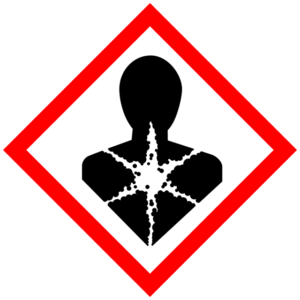
The above image is an international pictogram representing chemicals that are sensitising, mutagenic, carcinogenic or toxic to reproduction. Which, in layman’s terms, means a chemical or a mutagen that changes your genetic makeup resulting in producing damaged cells.
You may already know that cancer is when the body’s cells begin to divide without stopping. Usually, the cells are damaged cells. And when these abnormal cells multiply and spread into surrounding tissues, they form the tumours that we know as cancer.
So by taking precautions when renovation, you can avoid some of these mutagens that are known to cause cancer and illness.
In this article, we will look at the indoor quality and what it means to stay fit, well and healthy when you renovate your home.
Your Indoor Air Quality Can Be Worse That Outdoor Pollution!

You might recognize this image as a image of Sydney, Australia. The brown haze is the smog layer. This is what we live and breath in our capital cities.
In Australia, CSIRO is the Commonwealth Scientific and Industrial Research Organization.
CSIRO completed a study on the Indoor air quality in recently built homes. And what they found is astounding. They found that the levels of pollutants indoors were higher than the pollution outside.
The following is a quote from this study. And so that you know, PM10 refers to tiny particles in the air that are smaller than 10 micrometres in size.
In this study, CSIRO found that the ratio of the indoor air pollutants was higher than the pollution outside, in houses recently renovated.
Which means that you can expose yourself to indoor air pollutants as you renovate and in your freshly renovated home. What does this mean to you?
Well, it means that the chemicals, the dust and particles and other contaminants in the air could cause you to have a physical reaction. You may end up with watering eyes.
Or the chemicals in the air could cause you airway and breathing issues like asthma.
You could develop a skin rash.
It doesn’t necessarily mean that you will develop a severe illness such as cancer. It depends on your physical makeup, the exposure and the type of chemicals and your general health and fitness.
What Are the Indoor Air Pollutants?
So when we talk about indoor air quality, it involves indoor air contaminants. Four types of pollutants can contaminate indoor air quality.
They are
1. Chemicals or volatile organic compounds (VOCs)
2. Particles
3. Moulds and bacteria or biological agents
4. Radon or radioactive
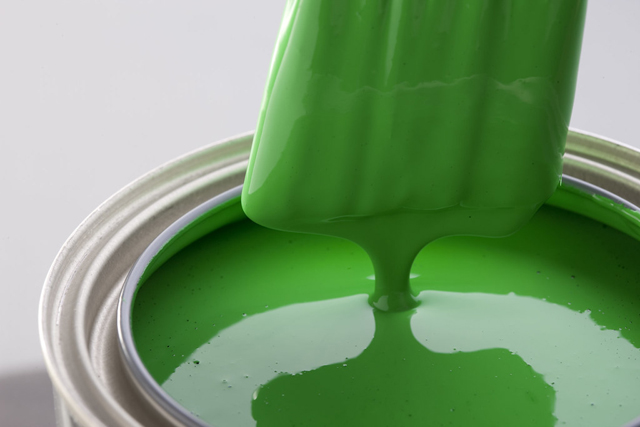
1. Chemicals or Volatile Organic Compounds (VOCs)
Volatile Organic Compounds (VOCs) are chemicals found in many building materials. These VOCs tend to vaporize from a liquid or solid into a gas.
For example, you can find VOCs in the solvents in glues or paint. As the glue hardens or the paints dries, the solvents vaporize to cure the material.
You can sometimes smell VOCs. But not all VOCs have an odour. There can be no sign of the VOC in your indoor air that you can detect. They can be odourless, tasteless and colourless.
A commonly found VOC is formaldehyde. You can find formaldehyde in chipboard and medium density fibreboard (MDF) building materials.

VOCs Can Be Natural Chemicals
You can also find natural chemicals which are VOCs. Terpenes in pine are a natural VOC. You notice the smell of the terpenes in a pine forest. Limonene is another natural VOC that gives the citrus odour to orange and lemon peels.
All the same, these natural VOCs and the human-made VOCs can cause an allergic reaction in people. And cancer, as is in the case of formaldehyde exposure and other chemicals.
It is critical that we use low VOC and zero VOC materials as we make our homes more energy efficient and airtight.
Because as we seal up our homes, we seal up these chemicals and so expose ourselves to higher levels.
So you want to make sure that when renovating your house, you keep it well ventilated. And that you use products such as low VOC paints or no VOC paints.
Use Building Materials with Low or Zero VOCs

That if you use chipboard or MDF, it is formaldehyde free.
Why formaldehyde free? Because formaldehyde is a human carcinogen. And exposure to low doses will irritate your eyes and your airways and your skin.
The type of insulation you use should be formaldehyde free.
If you would like to know more about indoor air pollutants in your indoor air, you can read ‘Is the Indoor Air Quality of Your Home Making You Sick?’
2. Particles and Particulates in Indoor Air
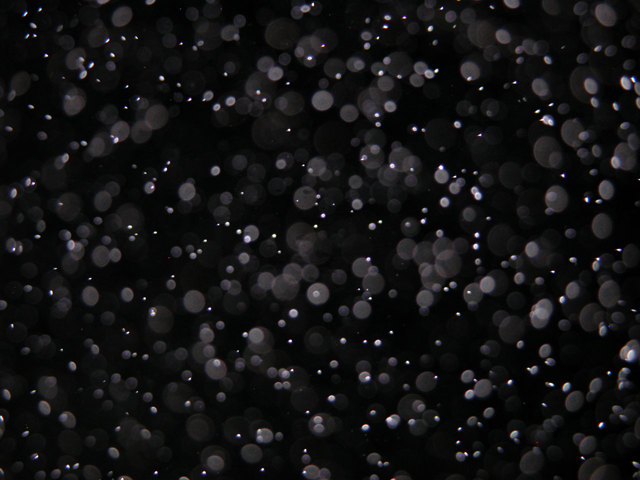
Particulates or particles in indoor air can be from smog, oil smoke, dust, tobacco smoke and the like. The above image shows you what your indoor air can look like in the city. You could and most likely have particles of pollen in your air.
Or there could be particles in the air such as dust from sanding back MDF.
The size of particles is crucial as we can inhale small or tiny particles into our airways.
Because of the size of these particles in the air, they can find their way deep into our lungs.
For this reason, they then have the potential to cause health problems.
The following is from Health NSW:
And the way we absorb chemicals in the air into our bodies is through the particles in the air. The compound fixes to the particulate, and we inhale the particle into our airways.
3. Moulds and Bacteria or Biological Agents
Deprecated: Function get_magic_quotes_gpc() is deprecated in /home1/bparchitects/public_html/wp-includes/formatting.php on line 4826
You could demolish your bathroom wall and find mould on the inside of your walls, like in the video above. Everyone will react to mould spores in some way.
Your indoor air could have bacteria, house dust mite allergens, or viruses. How these biological agents reproduce in your home depends on your indoor air temperature. And the moisture in your air.
They all affect the indoor air quality of your home, particularly when renovating. And they all have a part to play when it comes to your health when renovating.
More reading on what makes a sick building can be found at ‘Ways Your Home Makes You Sick’.
4. Radon or radioactive
Now I want to talk to you about radon. Radon is known as the daughter of uranium. Namely, uranium is the parent element, and when uranium decays it forms radium and radon.
Radon is a radioactive substance that is odourless, colourless and tasteless. And it is deadly. Next, to smoking, it is the second biggest cause of lung cancer in the U.S. They are finding the same results in the U.K. and France.
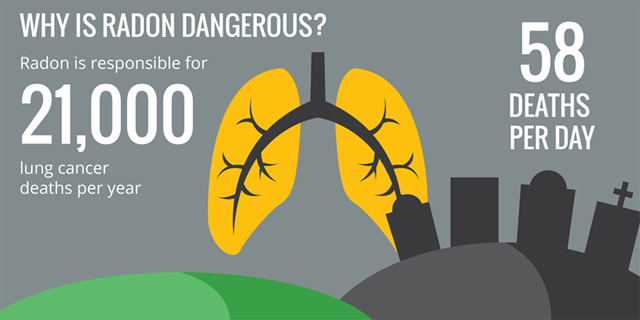
Yes, in the U.S.A. they have worked out that 58 people die every day from radon.
In the U.K., people will sit around at morning tea and chat about the radon levels in their homes over a cup of tea. It is common knowledge.
In Australia, Radon is not a household word. So it should not be surprising if this is the first time you have come across radon in homes.
Radon finds its way through the cracks and fissures in granite beds. It is a naturally occurring radioactive substance.
Radon Occurs Naturally

In Australia we have a natural hotspot for radon at the Paralana hot springs. It is located in Arkaroola, South Australia. Arkaroola is in the northern Flinders rangers of South Australia.
Scientists love this place because only incredible life form lives and survives in these types of conditions. Above you can see a picture of Paralana Hot Springs in all it’s natural beauty.
Apparently, there are no frogs in the area.
At the hot springs, there are high levels of radon. Underground water flows through uranium-rich rocks. Billions of years old, the springs bring radioactive radon and uranium to the surface.
There are times when they recommend that you don’t walk in this area because of the rise in radon levels. These are usually times when there are no winds or breezes, and the heavy, dense radon layer settles and increases in concentration.
And radon doesn’t restrict itself to outback South Australia.
Radon in the Suburbs

The picture above is a view over Berwick, in Melbourne’s south. My client Les wanted me to meet with him on his land site in Berwick.
When we were talking about his land, Les happened to mention that there was 10cm of topsoil on top of a granite bed.
The presence of the granite on his home site meant two things to Les. First, he would have to allow extra for the excavation costs for building into the rock bed. And second, there were high chances that were Les to build his home on a granite bed; this could exposure him to radon.
As we stood on Les’s home site in Berwick, this seemed like a far-fetched idea for Les. Because Les had never heard of radon, I told him that he doesn’t have to take my word for this. He could ring the Australian Radiation Laboratories and ask them what they think.
Consequently, Les did ring the laboratories, and it was hard to say who was the most surprised. The laboratories don’t receive too many calls from the public. But they did say to Les that yes, it is true. That building into a granite bed could expose you to radon.
For this reason, they offered to give Les a radiation tracker to put in his new home, to measure the levels of radon in his home.
Radon in Your Home
In conclusion, yes, radon is real, it’s natural, and it’s deadly.
So radon can get trapped in a house and can cause exposure to you at high levels. If you would want to learn more about this and how to avoid renovation mistakes, you can watch my MasterClass at www.smartrenovators.com.au.
We don’t have a tradition of building basements to our houses like they do in Canada. So it is not so commonplace to find a radon sink in a home, whereas it would be a subject of discussion in the street of downtown Vancouver, for example.
And in the U.S. you can buy radon test kits from hardware stores.
So don’t think it could only happen in the U.S. or Canada.
Here in Australia, the Australian Radiation Protection and Nuclear Safety Agency has surveyed for levels of radon in homes. And they found that approximately one in 1000 homes may have high levels of radon.
Generally, they were homes on concrete slabs with brick walls.
The Australian Radiation Protection Agency states that
Radon is Colourless and Odourless
Because radon is a colourless, odourless gas, the only way to know how much is present in your indoor air is to perform a test.
It is essential that you know that you can do something to make sure that you don’t expose yourself to something as deadly as radon.
You can find out if your house is in a high radon area and you can test for radon.
The Australian Radiation Protection Agency has tested the whole of Australia for radon. You can check to see if your suburb comes up as an area that has recorded high levels of radon on the radon map.
You can buy a radon test kit and check your home for radon levels.
If your home shows up as having high levels of radon, you can fix this problem.
Installing an exhaust sump will pump out the air from the room in your house that has high radon levels.
And you can increase the ventilation in this room. Sealing the cracks and gaps in your foundation will prevent radon from getting into your home in the first place.
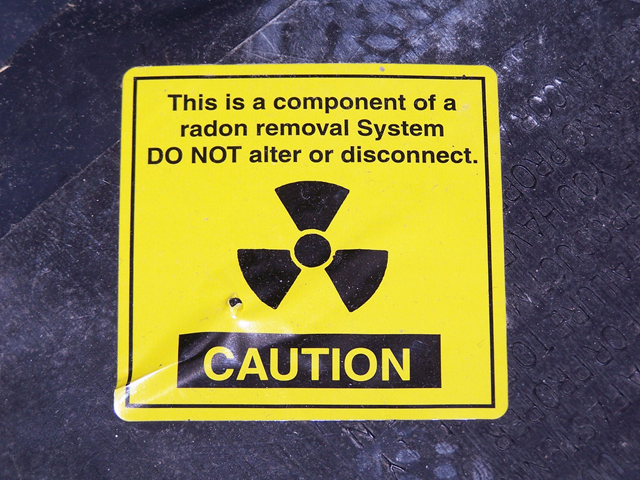
You Can Have a Healthy Home with Good Indoor Air Quality
You can design your home so that it is a healthy home, using materials so that you don’t exposure yourself to human carcinogens within your home. Or suffer from allergies relating to the materials used to build your home.
So let me know what you think about chemicals in your indoor air. Have you heard of Radon before? Will you be taking extra precautions to protect yourself now that you know more about these allergens, mutagens and chemicals.
Have you experienced any health issues yourself relating to your indoor air quality in your home?
And how do you feel about what I’ve talked about in avoiding risking your health in your home renovation?
Is this something you have thought about yourself, or is it new for you? Let me know in the comments below.
So we have looked at three areas of health and your safety in home renovating. Why you should identify asbestos materials in your home and what you can do about asbestos if you have it in your home.
The health and safety measures you should consider in your home renovation.
And now we have discussed your indoor air quality and how it affects you in your home renovation.
Stay safe and healthy in your home and home renovation so that you can look forward to a healthy home with those your love.
Happy Renovating
Bridget Puszka
Bridget Puszka designs beautiful, healthy, sustainable luxury homes. You can find out more about her architect designed Award-winning houses.
And learn what her clients have said about their homes in their testimonials.

